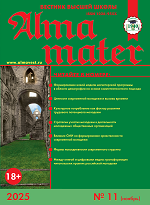UDC 316-054-042.4:004
https://doi.org/10.20339/AM.04-21.119
M.I. Krishtal is Cand. Sci. (Geography), Researcher e-mail: MKrishtal@kantiana.ru; and A.V. Shchekoturov is Cand. Sci. (Sociology), Head of Sociological Lab e-mail: ASHCHekoturov@kantiana.ru. Both at Sociological lab of the Institute for Geopolitical and Regional Studies of Immanuel Kant Baltic Federal University
Presented is the analysis of peculiarities of behavior of Russian and American students in the social network Facebook. The focus of the study is on what activities students of the two countries are most often engaged in, as well as on what motives they motivate when adding users to the personal list of friends. The main method of research is a formalized interview (N = 266). Students of two higher educational institutions located in Kaliningrad (Russia) and Philadelphia (USA) were interviewed. In anticipation of the analysis, according to the functionality, the types of activities on Facebook were highlighted, i.e. social, functional and cognitive. Also forms of activity were divided into public and private according to the nature of their manifestation (open or hidden). The motives for making friends were typologized according to the user’s orientation towards the development of “binding” or “connecting” social capital. As a result of the analysis, it was revealed that students from the United States are more likely to engage in public activities on Facebook than students from Russia, which is expressed in more active commenting on posts, publishing content on their personal page and friends’ pages. Russian students prefer private activities (chat and viewing other people’s pages). The functional type of activity, expressed in the use of gaming and non-gaming applications, turned out to be the most unpopular form of pastime on Facebook among students in both countries. It was also found that students at two universities are more focused on the development of “connecting” social capital. At the same time, for Russian students the dating factor in real life does not act as an important motive for adding friends to the list as for American ones. It is suggested that the basis for the differences discovered are the features of the cultural environments in which students live. The Russian environment involves more cautious participation in public life, the American stimulates social activism. Significant gender differences in peculiarities of student behavior in Facebook network could not be identified.
Key words: social networks, students, Facebook, formalized interview, motivation, behavior, social capital.
References
1. Belinskaya, E.P., Frantova, D.K. Activity in virtual interaction as a factor in construction identity by consumers of social networks intergeneration differences. Vestnik RGGU. Series “Psychology. Pedagogy. Education” 2017. No. 3. P. 22–37. (In Russ.).
2. Brodovskaya, E.V., Dombrovskaya, A.Yu., Sinyakov, A.V. Strategy of using of social networks in modern Russia: results many-measured scaling. Monitoring obshchestvennogo mneniia: Ekonomicheskie i sotsial’nye peremeny. 2016. No. 1. P. 283–296. (In Russ.). DOI: 10.14515/monitoring.2016.1.13
3. Bourdieu, P. Forms of capital. Economic sociology. 2002. Vol. 3.No. 5. P. 60–74. (In Russ.). URL: https://doi.org/10.17323/1726-3247-2002-5-60-74
4. Gurkina, O.A., Maltseva, D.V. Motives in using virtual social networks by teenagers. Sociology researches. 2015. No. 5. P. 123–130. (In Russ.).
5. Sergeeva, Yu. Social networks in the year of 2018 godu: global research. URL: https://www.web-canape.ru/business/socialnye-seti-v-2018-godu-globalnoe-... (accessed on: 09.11.2020). (In Russ.).
6. Shakhmartova, O.M., Nedoshivina, I.V. Research in motives in using social networks by young schoolpersons. Izvestiya PGPU im. V.G. Belinskogo. 2012. No. 28. P. 1348–1353. (In Russ.).
7. Brodovskaya E.V., Dombrovskaya A.Y., Ivanov I.S. The sociopolitical profiles of young Internet users in Russia // 2nd the International Conference on the Transformation of Education. Printed and Bound by Berforts Information Press Ltd, UK / Held by SCIEURO in London. 24–25 April 2014. P. 126–141.
8. Di Capua I. A Literature Review of Research on Facebook Use // The Open Communication Journal. 2012. Vol. 6 (1). P. 37–42. DOI: 10.2174/1874916X01206010037
9. Ceccucci W., Peslac A., Sendall P. An Empirical Study of Social Networking Behavior Using Theory of Reasoned Action // Conference for Information Systems Applied Research. 2011. P. 1–13.
10. Joinson A.N., Vasalou A., Courvoisier D. Cultural differences, experience with social networks and the nature of ‘‘true commitment’’ in Facebook // International Journal of Human-Computer Studies. 2010. Vol. 68. P. 719–728.
11. Joinson A.N. Looking at, looking up or keeping up with people? Motives and use of Facebook // SIGCHI. 2008. P. 1027–1036.
12. Lin K.-Y., Lu H.-P. Why people use social networking sites: An empirical study integrating network externalities and motivation theory // Computers in Human Behavior. 2011. Vol. 27. P. 1152–1161.
13. Liu D., Ainsworth S.E., Baumeister R.F. A meta-analysis of social networking online and social capital // Review of General Psychology. 2016. Vol. 20 (4). P. 369–391. DOI: 10.1037/gpr0000091
14. Mazer J.P., Murphy R.E., & Simonds C.J. I’ll see you on ‘‘Facebook”: The effects of computer-mediated teacher self-disclosure on student motivation, affective learning, and classroom climate // Communication Education. 2007. Vol. 56(1). P. 1–17.
15. Putnam R.D. Bowling alone: The collapse and revival of American community. NY: Simon & Schuster. 2000. 544 p. DOI: 10.1145/358916.361990
16. Spiliotopoulos T., Oakley I. Understanding Motivations for Facebook Use: Usage Metrics, Network Structure, and Privacy. CHI’13: Proceedings of the SIGCHI Conference on Human Factors in Computing Systems. 2013. P. 3287–3296. URL: https://doi.org/10.1145/2470654.2466449
The research was supported by the grant of the President of the Russian Federation No. MK-1909.2019.6 at the Immanuel Kant Baltic Federal University. The project “Private in public: Cultural features of managing self-presentation by the student youth in social media (on the example of Russia and the USA)”.











.png)






